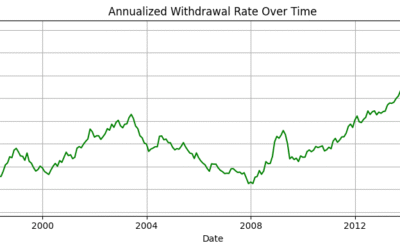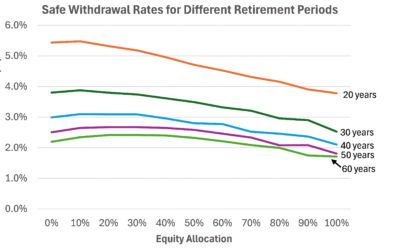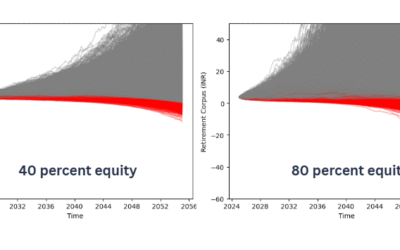Market-linked debentures are like zero-coupon debt instruments where the payoffs are dependent on the linked indices. Their tax treatment, though complicated, can offer better post-tax returns to investors, compared to plain vanilla debt securities.
Low interest rates have left debt investors with very few doors to knock. Earlier, an ‘attractive’ way to offset compression in yield was to climb down the rating curve. But after a string of credit-stress events, investors are looking for a new game in town, like the market-linked debentures (MLDs).
The payoffs in MLDs are dependent on a reference security or an index. If an MLD is linked to, say the Nifty 50, then the interest payable will depend on the performance of the benchmark index. For instance, an MLD might specify that if the Nifty 50 falls by 25%, then no interest is payable, otherwise 8% interest is payable. The returns in these products are capped and the downside is that only the principal will be repayable without any interest.
Even though MLDs are gaining in popularity, there is very little understanding of the behind-the-scenes that make them more tax-efficient than other debt products.
How MLDs work
To fully understand how MLDs work, we need to go back a little.
Prior to 2002, the easiest way to avoid getting taxed at marginal rates on the interest income from bonds was to buy a zero-coupon bond and sell it close to maturity. By doing this, an investor could book the accumulated interest as capital gains. Given the tax arbitrage between interest income and capital gains, many wealth-management outfits would arrange such a sale and buyback of zero-coupon bonds for their clients. Also, the investor would pay a 10% LTCG on the entire transaction.
The taxperson was, of course, not happy. To curb this practice, the Central Board of Direct Taxes (CBDT) came up with a circular in 2002, which put a spanner in such transactions. Amongst other things, the circular put two conditions that effectively spelt the death of this capital-gains stripping.
First, it specified that even though you receive interest in a zero-coupon bond at maturity, you will still need to accrue interest income each year and offer such accrued interest income for taxation. Second, the circular also mandated that when you sell a zero-coupon bond, the capital gains are calculated not from the issue price, but from the last annual fair value price.
To examine how these two conditions operated, take the example of a three-year zero-coupon bond which an investor holds for two years and then sells in the third year (before maturity). In the first two years, the investor would have to pay the tax on the accrued interest at the maximum marginal rate applicable on them. In the third year, when the investor sells the bond, she would pay capital-gains tax.
Hence, after the 2002 circular, the investor would have to pay 30% tax on first year’s accrued interest, 30% tax on second year’s accrued interest, and 30% short-term capital gains tax on third year’s gains.
The wordings of the circular also ensured that selling a zero-coupon would always attract short-term capital-gains tax, irrespective of its holding period. This is because the circular specified that zero-coupon bonds must be valued annually, and both the capital gains and the holding period will be calculated from the last annual valuation date and not the original acquisition date.
This effectively meant that the holding period for calculating capital gains will always be less than one year and accordingly the short-term capital gain tax will be triggered.
To surmount the challenges posed by the 2002 circular, the industry needed a product that met two conditions:
●The product should bypass the 2002 CBDT circular; and
●The product should make income accrual before maturity very difficult.
The instrument that was stitched up to meet these two conditions was none other than MLDs.
The risks associated
Since MLDs are not strictly zero-coupon bonds and more like a hybrid instrument, the argument is that the 2002 CBDT circular does not apply on them. Also, since the payoff in an MLD becomes clear only on maturity, it is difficult for the taxperson to ask the investor to accrue annual income for the product. Thus, MLDs meet both the conditions outlined above.

However, investors should be wary about the risks in the argument above. The key risk is that some of the MLDs are market-linked only superficially. The market-linked condition gets triggered only in the case of a Black Swan event, and for all practical purposes, the MLD functions like a zero-coupon bond. Thus, some MLDs are market-linked only in letter and not in spirit.
Another risk is that a veneer needs to be constructed that there is no prior arrangement for buying back the MLD close to its maturity. Otherwise, regulatory and tax provisions relating to re-purchase (repo) transactions could become applicable.
In 2017, Securities and Exchange Board of India restricted the number of ISINs (International Securities Identification Number) per issuer for MLDs to a maximum of five. Since then, there has not been much action on the regulatory front for MLDs.
Does this indicate that regulators have higher comfort on this instrument? Only time will tell. In the meantime, given the scarcity of yield, we can expect a robust pipeline of MLD issuances in the future.
(This article was published in ETPrime on October 07, 2021 and can be accessed from the link https://economictimes.indiatimes.com/prime/money-and-markets/market-linked-debentures-are-gaining-popularity-among-debt-products-are-they-tax-efficient/primearticleshow/86814958.cms)







0 Comments